Cape Cod Revival
1925 - 1955
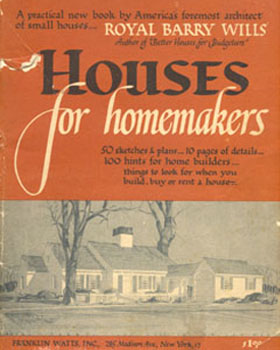 The simple Cape Cod Revival style was one of the last house types of the American colonial era to be revived as a building form. Utilized exclusively for dwellings, the model for the style came from dwellings in Massachusetts and New York fishing villages. Built from 1700 to about 1850, many of the original Cape Cod dwellings were devoid of any architectural embellishments while others were often embellished with classical details.
The simple Cape Cod Revival style was one of the last house types of the American colonial era to be revived as a building form. Utilized exclusively for dwellings, the model for the style came from dwellings in Massachusetts and New York fishing villages. Built from 1700 to about 1850, many of the original Cape Cod dwellings were devoid of any architectural embellishments while others were often embellished with classical details.
The revival of the style began in late 1920s when it began to appear in a variety of shelter magazines and home builder catalogs. By the late 1930s it was among the most popular of the Colonial Revival styles. The design was featured advertisements for a variety of home products and was often constructed as a model home for new developments and home shows. Among the better examples was the Portland, Oregon based Western Pine Association’s model home at the 1939 San Francisco Exposition. In the Pacific Northwest, the best examples date to the late 1930s. While the design was still being published after WWII, by the mid 1950’s its use had nearly disappeared being replaced by the Ranch and other more modern house forms.
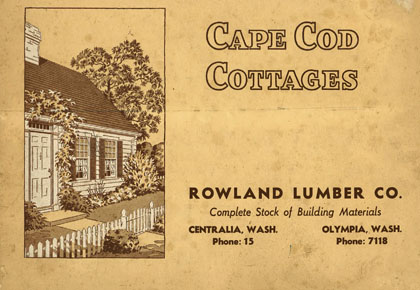 The revival of Cape Cod took a liberal interpretation of the original style and quickly became popular with many early suburban developers and first time home buyers. The basic form of the house is a simple rectangular footprint, 1 to 1 ½ story in height with a steep pitched roof. Devoid of dormers on the main façade, architectural detailing is limited to multi-pane windows with decorative shutters, brick chimneys and highly detailed entries. Exterior are commonly of wood clapboard, but examples of shingle and brick can be found. Roofs are clad in wood shingle and asphalt and have little to no overhang. Some examples have attached subservient wings which serve as extra living spaces or garages.
The revival of Cape Cod took a liberal interpretation of the original style and quickly became popular with many early suburban developers and first time home buyers. The basic form of the house is a simple rectangular footprint, 1 to 1 ½ story in height with a steep pitched roof. Devoid of dormers on the main façade, architectural detailing is limited to multi-pane windows with decorative shutters, brick chimneys and highly detailed entries. Exterior are commonly of wood clapboard, but examples of shingle and brick can be found. Roofs are clad in wood shingle and asphalt and have little to no overhang. Some examples have attached subservient wings which serve as extra living spaces or garages.
Washington State Examples
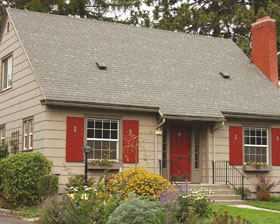 |
 |
 |
| House, Spokane - c. 1937 |
House, Olympia - c.1938 |
House, Walla Walla - c.1935 |
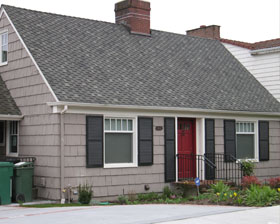 |
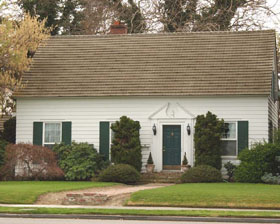 |
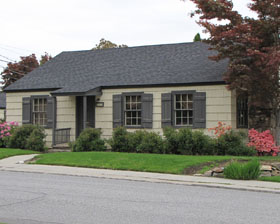 |
| House, Seattle - c.1947 |
House, Kennewick - c.1948 |
House, Wenatchee - c.1930 |
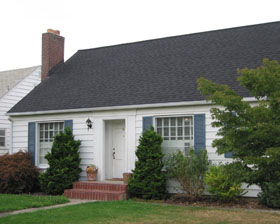 |
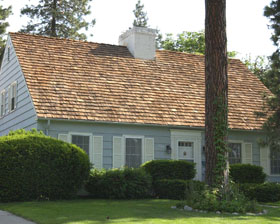 |
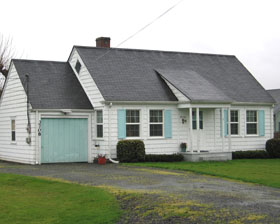 |
| House, Vancouver - c.1935 |
House Spokane - c.1950 |
House, |
For More Information:
- "Defining Cape Cod " Old House Journal. March/April 1995.
- Wills, Royal Berry, Houses for Homemakers, Franklin Watts, Inc, New York, NY. 1945.
- Cape Cod Cottages; Rowland Lumber Co. National Plan Service, c. 1938
- 44 Up to Date House Designs . Authentic Publications Inc. New York, NY, 1950.
- "The Cape Cod Revival" Old House Journal. March /April 2003.
- National Economy Homes: Engineered for Substainial Savings - 1949
- Modern Homes - Sears, Roebuck & Co. - 1936
- "A Cape Cod Cottage in Bronville, NY" The Small Home, September 1930.
- Helping Today's Home Builders Get their Money's Worth - Weyerhaeuser 4-Square - 1947
- The Blue Book of Home Plans for Home in the Pacific Northwest, Pacific First Federal Savings & Loan Association, Tacoma, 1937
- "Cape Cod Designs Always Popular " The Columbian January 8, 1957.
- "Cape Cod Charm - Ranch House Living" Better Homes & Gardens April 1950.
- Western Pine Home Brochure, Golden Gate Exposition, 1939
- Editors of the Architectural Forum, The 1938 Book of Small Houses. Simon & Schuster, Inc. New York, NY, 1937.
- Schweitzer, Robert & Michael Davis, America's Favorite Homes Wayne State Unversity Press, Detroit, MI, 1990.
- Walker, Lester, American Homes: An Illustrated Encyclopedia of Domestic Architecture, the Overlook Press., New York, NY 1981.
- Economy Built Homes: National Plan Service - 1937
- Expansible Homes Designed To Grow: National Plan Service - 1952
- Modern Living Homes: National Plan Service - 1948
- Homes of Moderate Cost: National Plan Service - 1952




